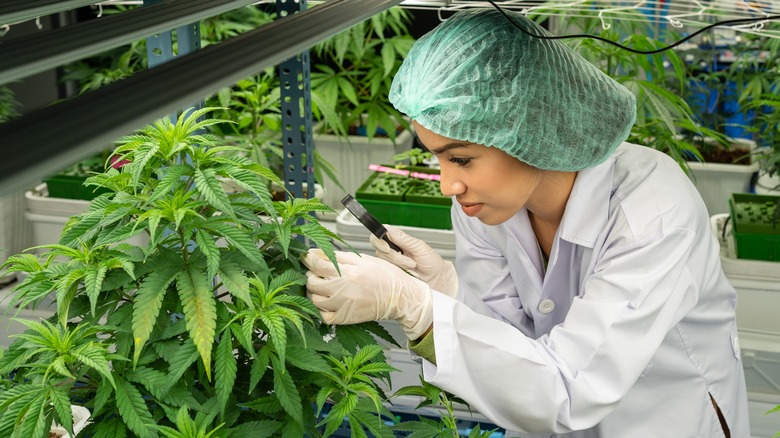What's The Difference Between Sativa And Indica Cannabis Strains?
Marijuana — you know the name and the stigma, and you likely know there's been progression regarding recreational and medicinal usage. However, not all marijuana or cannabis are the same. Here are the significant differences to pay attention to.
With cannabis becoming more accepted and available, it's important to understand the different types you can choose from. According to Healthline, there are two major types of cannabis with two distinct profiles when it comes to the effects they have. To make more sense of these types, you must first know a little about cannabis.
Cannabis is a plant that contains naturally occurring ingredients that dictate the effects the plant has when ingested, vaped, or smoked. One of these impactful components is the chemical compound cannabinoids. The two major cannabinoids are THC which is responsible for the "high" psychoactive aspect of cannabis, and CBD, which provides physical benefits such as pain relief or reduction of seizures without the feeling of being "high."
Terpenes are the other naturally present aspect of cannabis that determine the effects of the plant. There are many terpenes, such as limonene which provide a citrus smell and effects like boosted mood and reduced stress. Nine other terpenes and their direct impacts have been recognized, including pinene, ocimene, myrcene, linalool, caryophyllene, bisabolol, terpinolene, humulene, eucalyptol. What are the differences between sativa and indica regarding these compounds and their effects?
Indica and sativa are on opposite sides of the spectrum
The two species or strains of the cannabis plant are Cannabis Sativa and Cannabis Indica (per Medical News Today). Cannabis sativa is the invigorating or energizing side of cannabis suggested for daytime use, with many using it to boost mood, productivity, or creativity. This is because of the combination of cannabinoids and terpenes but also because sativa has higher levels of THC. The sativa plant, which is native to Southeast Asia, and Central and South America, is visually distinguishable with tall, skinny, light green leaves.
Indica is said to be on the other side of the spectrum as it contains higher CBD levels, provides more relaxing effects, and is used to relieve pain, sedate, and stimulate appetite, per Medical News Today. It's native to the Middle East and differs visually, looking bushy and short with dark green leaves. Since they are the same species, both plants grow well in hot, sunny climates. Cannabinoids and terpenes will appear in varying combinations to make each cannabis experience unique, including separating sativa from indica.
The world is changing, though, regarding categorizing these different strains (via Healthline). Since "strain" has a negative connotation in medicine, the cannabis industry is moving away from it. Luckily, instead, they are attempting to move forward defining cannabis using three more descriptive and user-friendly terms, Type I: high THC, Type II THC/CBD combined, and Type III: high CBD. As we learn and better understand cannabis, changes like this will likely continue and help reduce its stigma.


